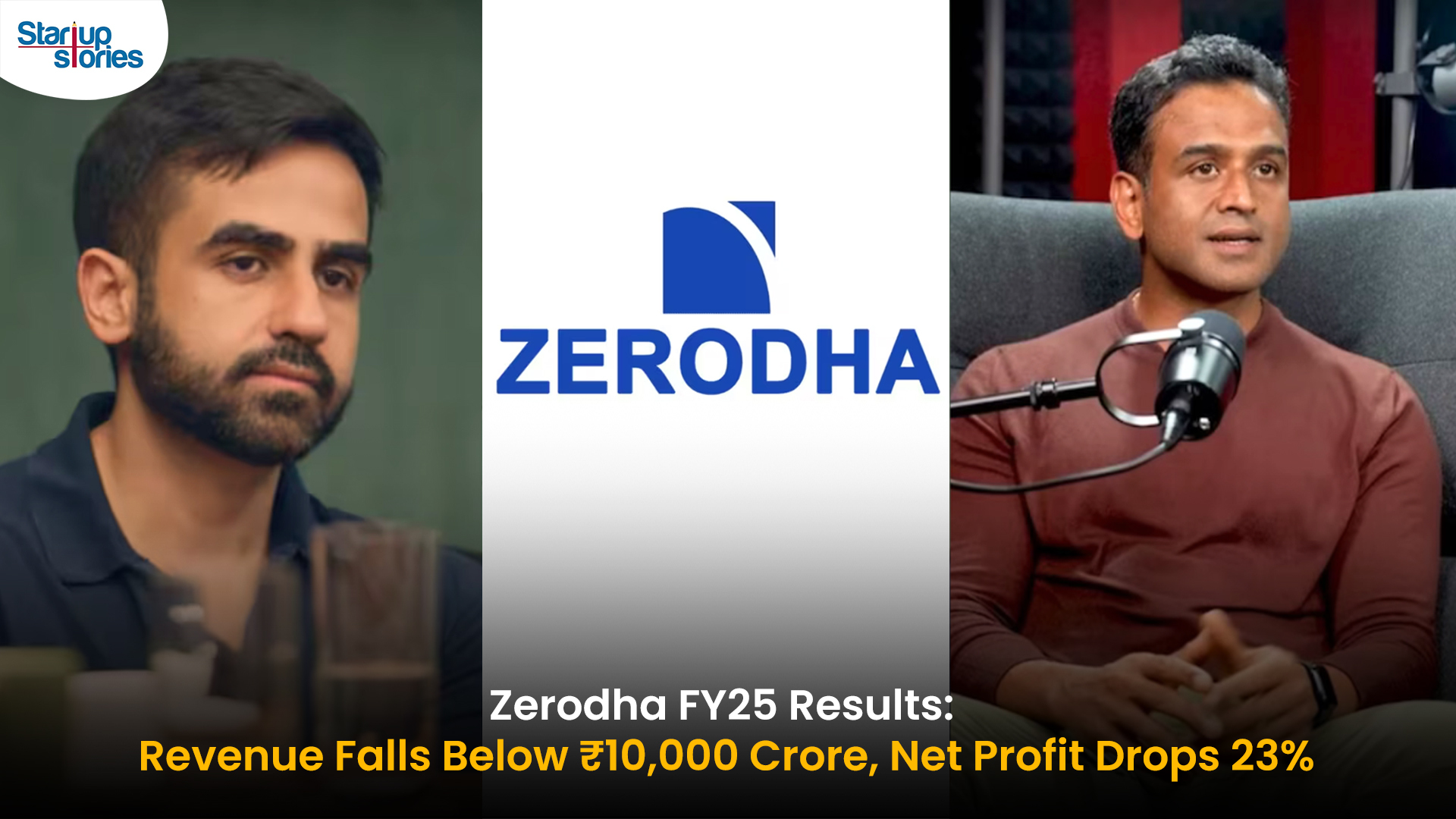Latest News
Alphabet Inc., Sells New Wireless Internet Tech To Andhra Pradesh

Alphabet Inc., Google’s parent company, will be providing the Andhra Pradesh Government with high speed wireless internet technology. Alphabet’s X research division announced on Thursday, the AP government will be buying newly developed technology to provide internet to millions of people without laying any cables.
According to the agreement, 2,000 boxes will be installed as far as 20 kilometers apart, on posts and rooftops to bring fast internet to connect populated areas. While the terms of the agreement have not been disclosed, the deal will begin sometime next year. The agreement is an extension of X’s Project Loon, which has beamed cellphone service to Earth from a network of large balloons.
Instead of balloons, however, the company will be using laser beaming boxes which rely on Free Space Optical Communications (FSOC) tech. Speaking about the latest tech X’s Baris Erkman said, “(FSOC is ) Just like fiber optic cable, but without the cable.” This collaboration aims at creating a new backbone to supply service to cellphone towers, Wi-Fi hotspots and endpoints that users would be able to access. According to X, FSOC will transmit data through light beams at a speed up to 20 gigabits per second, thereby creating a bandwidth for thousands of people to browse the Web simultaneously through the same cell phone tower.
According to a news daily, out of the 53 million citizens of Andhra Pradesh, only 20% of the populace have access to the Internet. The State Government of AP has pledged to connect 12 million households as part of their AP Fiber Grid program. To help with the roll out next year, a small X team will be based in Andhra Pradesh.
Previously, Alphabet has used X’s balloon technology to deliver high speed internet to 100,000 internet starved users in Puerto Rico in the wake of Hurricane Maria. Along with Alphabet’s X, Facebook is also working in developing its Internet serving program.
Latest News
Zerodha Reports 23% Profit Decline in FY25 as Revenues Miss Target

Zerodha experienced a challenging FY25, as its revenue fell 11.5% to ₹8,847 crore and net profit dropped 22.9% to ₹4,237 crore. This decline reflects tougher regulatory conditions, lower trading volumes, and increased operational costs in the brokerage market, all of which impacted core earning segments for the company.
Despite these headwinds, Zerodha improved its operating margin to 63.78% and built up significant cash reserves, reporting ₹22,679 crore in bank balances. Salary expenses and director remuneration increased, but disciplined cost controls helped the company maintain profitability and a debt-free balance sheet. The drop in active clients and increased compliance costs further contributed to the profit contraction.
Looking ahead, Zerodha’s resilience is supported by its robust cash position and operational efficiency. Maintaining steady margins, diversifying product offerings, and investing in technology positions the company to withstand future regulatory fluctuations and changing market sentiment reinforcing its status as one of India’s leading brokerage firms.
Latest News
Zoho Pay Debuts as India’s New UPI Challenger, Taking on PhonePe, Paytm, and Google Pay

Zoho Corporation has expanded its fintech portfolio with the launch of Zoho Pay, a UPI-based payments app built to challenge India’s top digital payment giants such as PhonePe, Paytm, and Google Pay. The new app supports peer-to-peer transfers, bill payments, QR-based transactions, and merchant settlements in a streamlined interface. Available as both a standalone app and an integrated feature inside Zoho’s privacy-driven messenger Arattai, Zoho Pay enables users to handle chats and payments in one platform, emphasizing data privacy and Made-in-India innovation.
Through seamless integration with Arattai, Zoho Pay allows users to send or request payments, split expenses, and conduct UPI-based transactions directly in their chat windows. Users can link bank accounts, scan dynamic QR codes, and receive audio confirmations of payments, ensuring speed and security. This design mirrors the simplicity of India’s leading UPI apps but is powered by Zoho’s non-advertising, privacy-first model. The integration aligns with Zoho’s mission to build a self-reliant digital ecosystem, where messaging and money management coexist securely.
In the competitive digital payments market, Zoho Pay differentiates itself through its tight business software integration with apps like Zoho Books, Zoho Payroll, and Zoho Commerce, offering small businesses unified access to payments, billing, and accounting. The company is also expanding its reach with POS devices for merchants featuring UPI QR, card payments, and instant reconciliation tools. With founder Sridhar Vembu’s vision of a ‘Chat + Pay’ ecosystem, Zoho Pay reflects a bold step toward redefining India’s fintech scene with a secure, ad-free, and locally developed alternative to global payment platforms.
Latest News
Meta Expands AI-Powered Reels Translation to Hindi and Portuguese, Enhancing Global Creator Reach

Meta has expanded its AI-powered translation feature for Reels to include Hindi and Portuguese, joining English and Spanish in empowering creators to reach a broader global audience on Instagram and Facebook. Originally launched in August 2025 with support for English and Spanish, this update now allows creators to seamlessly translate and dub their short videos, breaking language barriers across some of the largest Reels markets worldwide. The AI technology mimics the creator’s voice tone and even offers lip-syncing to ensure the translated videos feel natural and engaging for viewers.
This enhancement is especially significant for India, the largest market for Facebook and Instagram, where over 600 million people speak Hindi. Content creators who are not fluent in Hindi can now easily access this vast audience, increasing their reach and engagement across diverse linguistic groups. To maintain transparency, all translated Reels are clearly labeled with “Translated with Meta AI,” and viewers can choose to switch translations on or off based on their preference.
In addition to voice dubbing, Meta is developing features to translate captions and text stickers on Reels, making content more accessible even without sound. These AI translation tools are available free for eligible public Instagram accounts and Facebook creator profiles with over 1,000 followers. This innovation reinforces Meta’s commitment to fostering cross-cultural content sharing and enhancing creators’ ability to connect with audiences around the world through short-form videos.












seo hizmeti
July 14, 2025 at 3:05 am
Pretty! This has been a really wonderful post. Many thanks for providing these details.
xzavier mcdaniel
August 25, 2025 at 7:13 am
So glad I stumbled upon this. 👉 Watch Live Tv online in HD. Stream breaking news, sports, and top shows anytime, anywhere with fast and reliable live streaming.
natalia jordan
September 20, 2025 at 11:42 am
I’m often to blogging and i really appreciate your content. The article has actually peaks my interest. I’m going to bookmark your web site and maintain checking for brand spanking new information. 👉 Watch Live Tv online in HD. Stream breaking news, sports, and top shows anytime, anywhere with fast and reliable live streaming.
Thomasheito
October 23, 2025 at 1:03 am
I started charming [url=https://www.cornbreadhemp.com/collections/thc-gummies ]weed gummies[/url] a itty-bitty while ago ethical to discover what the hype was thither, and contemporary I in reality look cheeky to them ahead of bed. They don’t left me abroad or anything, but they make it so much easier to cold and disappointing collapse asleep naturally. I’ve been waking up feeling pathway more rested and not sluggish at all. Honestly, kind of impose upon I’d tried them sooner.
Kuwin
November 7, 2025 at 7:44 am
kuwin sở hữu kho game đa dạng từ slot đến trò chơi bài đổi thưởng, mang đến cho bạn những giây phút giải trí tuyệt vời.
MM88
November 7, 2025 at 3:08 pm
Với giao diện mượt mà và ưu đãi hấp dẫn, MM88 là lựa chọn lý tưởng cho các tín đồ giải trí trực tuyến.
ios超级签
November 9, 2025 at 6:39 am
苹果签名,苹果超级签平台,ios超级签平台ios超级签苹果企业签,苹果超级签,稳定超级签名
iwin
November 13, 2025 at 5:57 pm
iwin – nền tảng game bài đổi thưởng uy tín, nơi bạn có thể thử vận may và tận hưởng nhiều tựa game hấp
站群程序
November 14, 2025 at 4:06 am
采用高效谷歌站群策略,快速提升网站在搜索引擎中的可见性与权重。谷歌站群
GO88
November 15, 2025 at 5:46 am
Tham gia cộng đồng game thủ tại Go88 để trải nghiệm các trò chơi bài, poker phổ biến nhất hiện nay.
MM88
November 20, 2025 at 3:21 pm
Khám phá thế giới giải trí trực tuyến đỉnh cao tại MM88, nơi mang đến những trải nghiệm cá cược thể thao và casino sống động.
J88
November 21, 2025 at 9:28 am
Đến với J88, bạn sẽ được trải nghiệm dịch vụ cá cược chuyên nghiệp cùng hàng ngàn sự kiện khuyến mãi độc quyền.